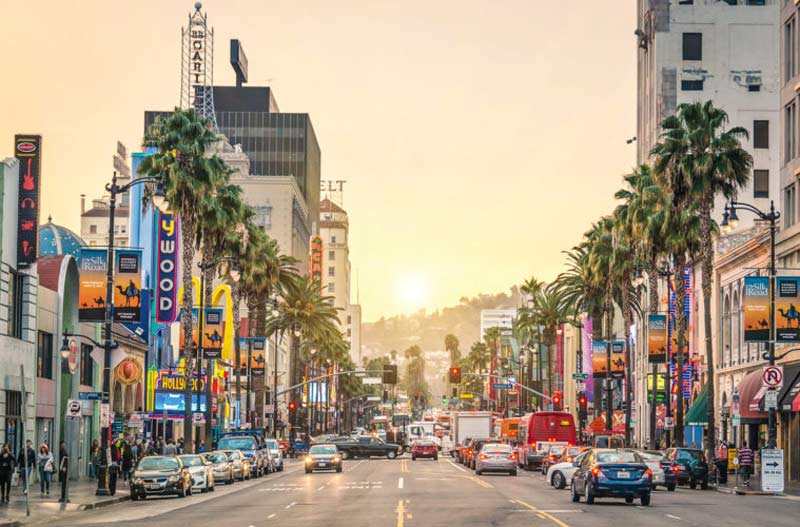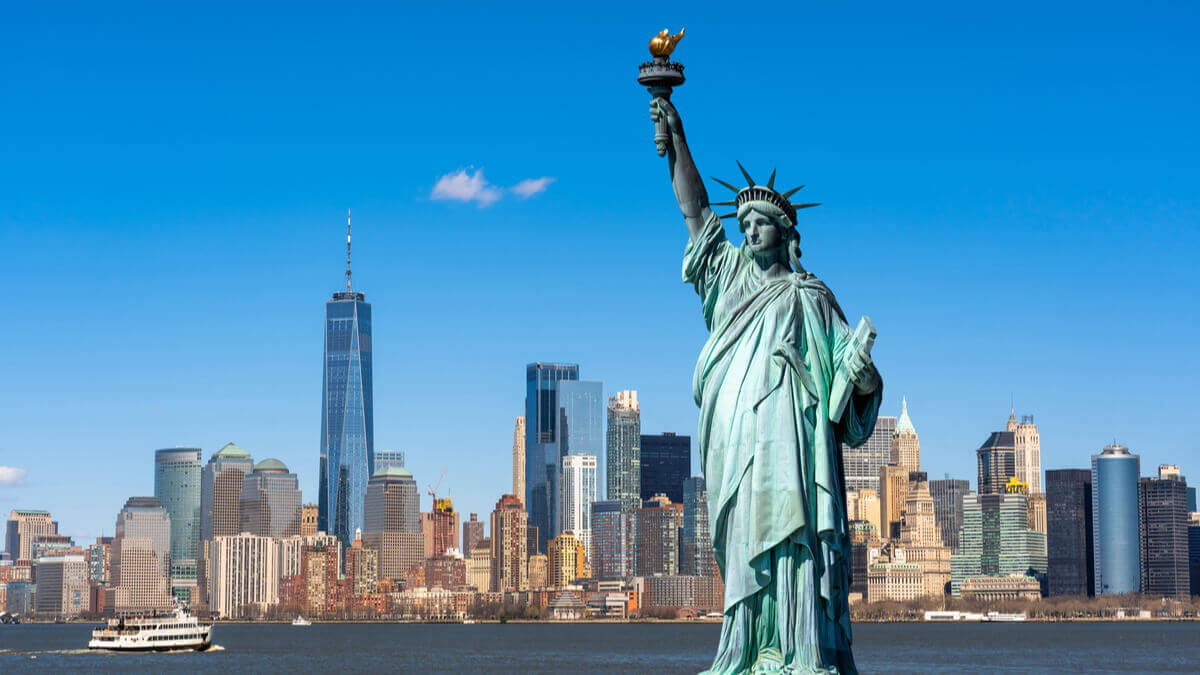Living in America: A Comprehensive Guide
The United States of America, comprised of fifty diverse states, is a land of contrasts. It offers a broad range of climates, cultures, and opportunities for individuals seeking new beginnings or career growth. With its vast geography and multicultural society, America provides the chance to experience a blend of worlds, each offering its unique character. In this comprehensive guide, we will delve into what living in the U.S. entails, covering key aspects such as lifestyle, cost of living, education, work opportunities, and more.

Introduction to Life in America
The U.S. is recognized as one of the most developed nations, known for its high living standards and cultural diversity. Whether you are drawn by career prospects, quality education, or simply the allure of a new lifestyle, living in America can be a rewarding experience. This guide will explore what to expect, covering everything from general living conditions to the nuances of navigating daily life in this vast country.
Living Conditions and Human Development Index
The United States ranks high in the Human Development Index (HDI), sitting at 17th globally. This ranking is based on factors such as health, education, income, and overall quality of life. America also ranks 19th in the World Happiness Report, underscoring its relatively high quality of life. The official currency is the U.S. dollar (USD), and most economic transactions are conducted in dollars, reflecting the robust financial system that underpins American society.
Cost of Living in America
Living costs in America vary significantly depending on which state or city you reside in. Major metropolitan areas like New York City and San Francisco are well known for their high living expenses, while smaller cities or those located inland may offer a more affordable lifestyle.
For example, the average cost of renting a one-bedroom apartment in New York City is around $3,000 per month. In contrast, the same type of apartment costs approximately $1,450 in Houston, Texas. This discrepancy in rental prices extends to other living expenses, including groceries, dining, and transportation, which all contribute to the overall cost of living.
Breakdown of Living Costs by Region
- East Coast: States like New York and Massachusetts offer cultural and professional opportunities but often come with high housing and transportation costs.
- West Coast: California is known for its vibrant tech industry and sunny climate, but the cost of living is among the highest in the country.
- Midwest: States like Ohio and Iowa offer more affordable housing and a lower cost of living, often making them attractive for families.
- Southern States: Florida and Texas provide diverse living experiences, with generally lower costs than the coasts, though housing prices can vary based on the proximity to urban centers or tourist areas.
Factors Affecting Living Conditions
The diversity of America is reflected in each state, which comes with its own economic and socio-cultural dynamics. For instance, California and New York are known as hubs for technology, finance, and the arts, resulting in higher living expenses. States like Texas and Florida, known for warmer climates and relaxed atmospheres, also have higher living costs in certain popular areas.
Choosing where to live depends largely on individual preferences, whether you prefer the hustle and bustle of a big city or the laid-back charm of smaller towns. Understanding these factors can significantly help in making an informed decision about where to settle.
Visas and Residency Requirements
If you want to live in the United States, acquiring the correct visa is crucial. Several visa types cater to different purposes, such as study, work, or permanent residency.
- Student Visas (F1, M1): Students accepted into SEVP-certified institutions are eligible for these visas.
- Work Visas (H-1B, L-1): These visas are issued for employment, typically requiring at least a bachelor’s degree and a specific job offer.
- Green Card: Permanent residency is possible through a Green Card, which allows individuals to live and work in the U.S. indefinitely. Green Cards are typically awarded through family connections, employment, or a diversity lottery.
Documents Needed for Visa Application
To apply for a U.S. visa, you generally need the following documents:
- Passport: Must be valid for at least six months beyond the intended stay.
- DS-160 Form: Printed confirmation of the completed form.
- Payment Receipt: Proof of payment of the visa application fee.
- Photograph: Must meet specific biometric requirements.
- Additional Documents: Depending on the visa type, additional documentation may be required, such as proof of financial support or employment letters.
Benefits of Holding a Green Card
Obtaining a Green Card comes with numerous benefits, including permanent residency rights and eligibility to work without needing additional permits. Green Card holders also have access to various social benefits and may apply for U.S. citizenship after meeting certain residency requirements.
Working in America and Social Security
After moving to the United States, one of the first administrative steps is to apply for a Social Security Number (SSN). The SSN is crucial for all official matters, such as employment, banking, and taxation. To apply for an SSN, foreign workers need documents showing their immigration status and employment eligibility, such as a work visa or I-94 form.
Life in Major U.S. Cities
New York City
Often called the “City that Never Sleeps,” New York is famous for its iconic skyline, cultural institutions, and vibrant lifestyle. It’s an ideal place for those looking for excitement, professional opportunities, and diversity. However, it is one of the most expensive cities in the world, with the cost of living significantly higher than the national average.
San Francisco
Known for its rolling hills and the Golden Gate Bridge, San Francisco is a tech hub that offers opportunities in innovation and entrepreneurship. Living here can be costly, particularly when it comes to housing, with the average rent for a one-bedroom apartment exceeding $2,870.
Houston, Texas
Houston is a major metropolitan area with a diverse economy centered around energy, healthcare, and aerospace. With affordable housing options and a lower cost of living compared to coastal cities, Houston is an attractive choice for many professionals.
Grocery Prices and Daily Expenses
Daily living expenses in the U.S. vary greatly by region. Below are some average prices for basic goods across the country:
| Item | Average Price (USD) |
|---|---|
| Milk, 1 liter | 0.9 |
| White bread, 1 loaf | 2.7 |
| Rice, 1 kg | 4.0 |
| Eggs, 12 count | 2.3 |
| Cheese, 1 kg | 11.0 |
| Chicken breast, 1 kg | 9.25 |
| Beef, 1 kg | 12.7 |
| Apples, 1 kg | 4.5 |
Transportation costs also vary depending on whether you are in a major city with accessible public transit or in an area where driving is necessary. In general, a one-way ticket for public transportation costs around $2.20.
American Lifestyle
The lifestyle in America is characterized by diversity and individualism. Many Americans live in spacious houses with backyards, especially in suburban areas. Car culture is also significant, as many cities have been built with driving in mind rather than public transit.
American holidays like Halloween, Thanksgiving, and Christmas are celebrated with enthusiasm, often including elaborate decorations and gatherings. Seasonal sales, such as Black Friday, attract people from all walks of life, eager to take advantage of discounts and prepare for the holiday season.
Tips for Moving to America
Before moving to the U.S., it is advisable to thoroughly research the area you intend to live in. Factors like access to public transportation, safety, and living costs are important to consider when selecting a city or neighborhood. For instance, in cities like New York and San Francisco, public transport is widely used, whereas in other places, having a car is almost essential.
Participating in community events is a great way to adapt to a new city. Whether it’s joining a local club or attending social activities, these experiences can make the transition easier and help newcomers feel at home.
Conclusion
Living in America can be an exciting and life-changing experience, full of opportunities and challenges. The key to success lies in thorough preparation, whether it’s understanding visa requirements, budgeting for living costs, or researching the cultural landscape of your chosen city. With its variety of regions, climates, and ways of life, there truly is something for everyone in the United States. For more information on settling in America, check out our related articles or consult a professional immigration advisor to get personalized assistance.
If you found this guide helpful, consider exploring our other articles that provide insights into working in America, navigating healthcare, and more. Each offers in-depth knowledge tailored to help you make informed decisions and ease your transition into American life.
What visa do I need to live in the U.S.?
Depending on your purpose (work, study, or family), different visa types may apply.
Is it difficult to get a work permit in the U.S.?
The process can be complex, often depending on your job offer and qualifications.
Where are the most affordable places to live in the U.S.?
Generally, states in the Midwest and the South offer a lower cost of living compared to the coasts.

